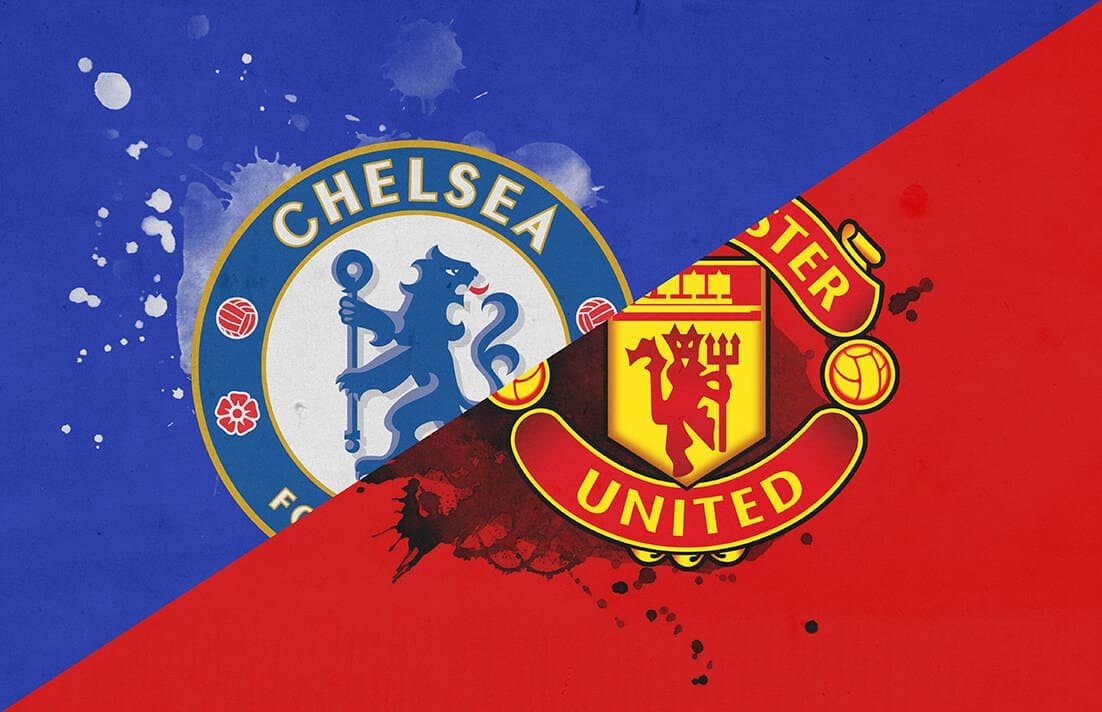This analysis of Chelsea’s midfield performance against Manchester United was first featured on our network’s Chelsea site feelchelsea.com.
Another weekend and thus another decent display by Sarri’s men at the Bridge. The late equaliser reflects the resilience of the Blues which was missing among them a season before. Thanks to the Englishman, Ross Barkley. The midfielder is considered a strong attacking threat by the opponents whenever he teams up with Jorginho and Kante. However, with him in the central midfield, the Blues are very likely to be exposed by the counterattacking opponents, as they were by Mourinho’s men. This is naturally due to the advanced role of Alonso, as being explained below. This calls for the need of having a central midfielder with defensive orientation adjacent to Alonso – like Kovacic – against the counterattacking opponents.
Alonso as an advanced left back
Chelsea play high more frequently or, say, quickly at the left vertical half of the pitch than it does at the right, and that’s due to the quicker penetration of Alonso to join up the offensive patterns in the final third of the pitch than of his counterpart, Azpilicueta. Even though Sarri makes his both fullbacks to join the attack only after their teammates would get the play up to the offensive half in possession, Alonso is still assigned the more advanced role than Azpilicueta. The heat map below shows Alonso’s strong presence in the offensive half in the recent home fixture against again Manchester United.

Being part of Chelsea’s attacking circle once his team gets into the final third, Alonso also tends to step in thus either joining the deep offensive patterns with the other advanced teammates or preparing himself to conclude the attacks from the deeper regions.




This attacking orientation of the Spaniard in Sarriball set up left Chelsea vulnerable to counterattacks by the opponents in the second half when Jose’s men were all intended to shift to an aggressive attacking style from the first half’s low-block defensive approach. It can be seen in the following match-shots that Alonso’s defensive position is not so strong and definitely needs someone from the central midfield to step out and provide the needed cover behind him. The absence of such cover would force Luiz to step out, which would create an even bigger danger for the Blues.


Kovacic’s midfield cover
The part of the pitch left by Alonso on his advanced movements was covered by Kovacic who stepped out and chased the opponent wide players faster than Alonso. Kovacic’s defensive positioning to stop the counters is very precise and allows Luiz to comfortably look for this own region without having to worry much about the left back spot. The heat map of Kovacic below shows that the loanee ensured his defensive presence in Chelsea’s half, especially at Alonso’s leftover region thus providing the later with the needed defensive cover.

Since United were playing with a 4-2-3-1 set up which is a very springy formation, the away team wins the ball at the last placed line of the team using this formation. Thus, in the first half, United could win the ball from Chelsea right behind the half line and in the second half, they could win the ball in their final third as their last line placed higher in that period. Thus, in both the periods it was very crucial for Kovacic to chase back the counterattacking opponent players.
The match-shots below also depict how Kovacic is fast enough to chase the opponent fullbacks and wingers when conceding the counterattacks in both periods of the game until he got replaced with Barkley in the third quarter of the game time.


Barkley’s defensively vulnerable moves
The inward substitution of Barkley proved to be offensively threatening to the opponents, as I highlighted above. After all, it was his good responsiveness in the opponent goal area which awarded Chelsea the stoppage time equaliser. However, as mentioned before, Barkley’s attacking orientation frequently exposed Chelsea’s half to the opponent counterattacks during transitions in the said fixture. The heat map of Barkley below shows his lack of defensive presence at the width of Chelsea’s defensive half.

This lack of defensive cover from Barkley forced Luiz to step out of his central defence zone when conceding the counterattacks thus completely exposing Chelsea’s first line of defence. It was the similar kind of disjoint defensive organisation which conceded Chelsea the second goal. The screen-shots presented below depict the same.

Conclusion
As far as Alonso’s offensive role is concerned, the role is important as it provided Chelsea with an option for lateral passing and thus for escaping the opponent closed press in the deeper regions. Thus, the only tactical step available for Sarri to defensively protect the counterattacks, in my opinion, seems to be to pre-plan the placement and replacement of Barkley (and Kovacic) to get the maximum impact out of each depending on Chelsea’s playing approach in a particular phase of the game. This judgement on Barkley’s lack of defensive orientation is not underrating the ex-Everton man’s performance. He is a great attacking asset, indeed. But when facing the counterattacking opponents there should be consideration of his placement/replacement time in integration to Chelsea’s playing approach (more attacking/less attacking) for a particular phase of the game.





Comments